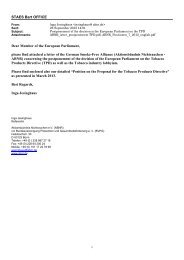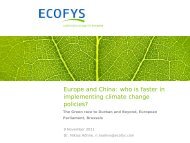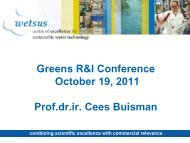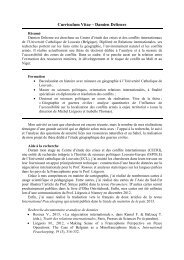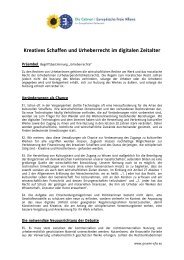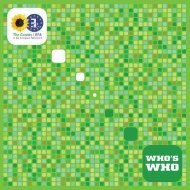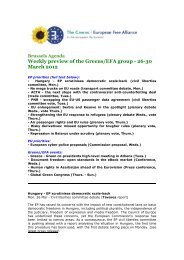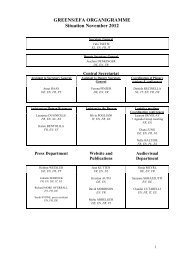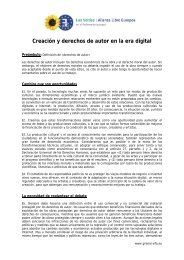Agro-Biotechnology: - The Greens | European Free Alliance
Agro-Biotechnology: - The Greens | European Free Alliance
Agro-Biotechnology: - The Greens | European Free Alliance
Create successful ePaper yourself
Turn your PDF publications into a flip-book with our unique Google optimized e-Paper software.
Framing legislation | Cloned farm animals - a ‚killing application‘? | 39<br />
6.2.2.1 Scientific reasons for an import ban<br />
Legislation in this sphere deals with import regulations and free movement<br />
of goods and is therefore of a complex nature. But there are some legitimate<br />
reasons to prohibit the import of genetic material derived from cloned farm<br />
animals and their offspring. <strong>The</strong> arguments can be deduced from mechanisms<br />
of genetics and epigenetics and the effects observed in cloned animals. As explained,<br />
cloned animals show a broad variation of health problems which can<br />
include the immune system. Potential risks concern animal and human health.<br />
<strong>The</strong> possibility of transmitting agents posing risks to human health is discussed<br />
by EFSA (2008a). Since no definitive causes for adverse health impacts<br />
are known, it is difficult to define a reliable risk assessment for the safety of<br />
genetic material from cloned animals.<br />
Furthermore, the risks cannot be confined to the first generation of cloned<br />
animals. Mechanisms are known that in principle allow the transfer of epigenetic<br />
effects and genetic defects to the next generations. RNA can for example be<br />
transmitted via semen, as discussed by EFSA (2009). Epigenetic imprinting is<br />
not completely deleted by the process of reprogramming during sexual reproduction<br />
(Jablonka & Raz, 2009). Mitochondrial heteroplasmy is also found in F1<br />
generations.<br />
Food products derived from cloned animals will also always imply a certain<br />
level of uncertainty emerging from the various factors that can impact the<br />
result of SCNT. <strong>The</strong>re is no history of safe use in this technology and its products.<br />
Further risk assessment of food products derived from cloned animals<br />
produced under certain technical procedures can hardly be transferred to<br />
other cloned animals (and their products) because of the broad range of factors<br />
impacting SCNT.<br />
<strong>The</strong> WTO agreements such as the Agreement on the Application of Sanitary<br />
and Phytosanitary Measures (SPS Agreement) and the Agreement on Technical<br />
Barriers to Trade (TBT Agreement) allow market measures, if they are based<br />
on the precautionary principle, only to be applied for a limited period of time.<br />
If these agreements are seen as relevant 46 , any period of time should cover at<br />
least several full life spans of animals derived from SCNT. Furthermore concerning<br />
technical uncertainties a much larger number of animals and derived<br />
products needs to be tested.<br />
<strong>The</strong> risk assessment should be performed case by case. Any change in techni-<br />
46 <strong>The</strong> TBT Agreement does not apply to SPS measures - see Article 1(4) of the TBT Agreement. Annex<br />
A of the SPS Agreement defines four types of SPS measures according to their purpose. If SCNT food<br />
products are seen as (a, c, d) “pests, diseases, disease-carrying organims or disease-causing organisms”<br />
or (b) “additives, contaminants, toxins or disease-causing organisms” the SPS Agreement would be<br />
relevant.



